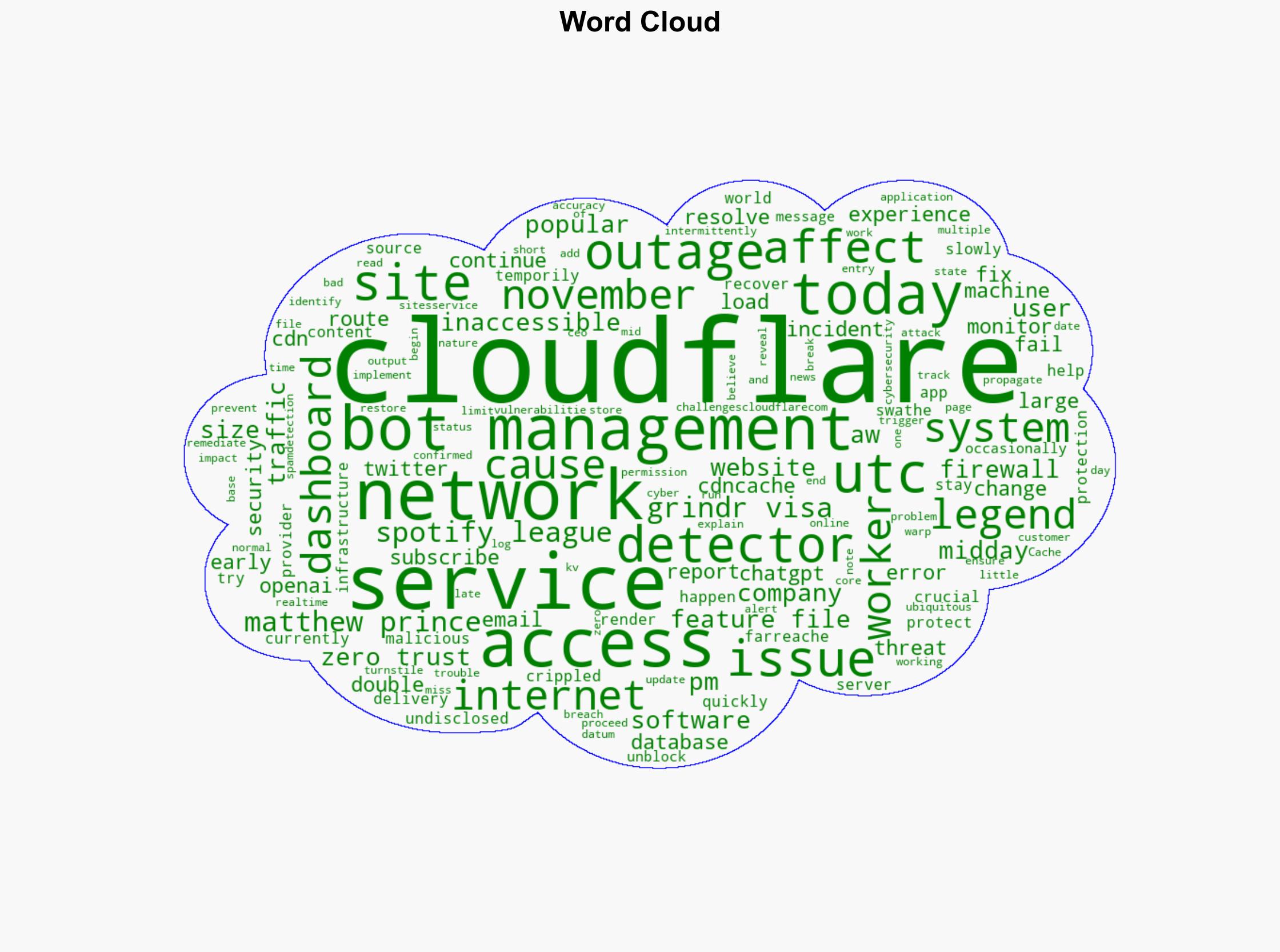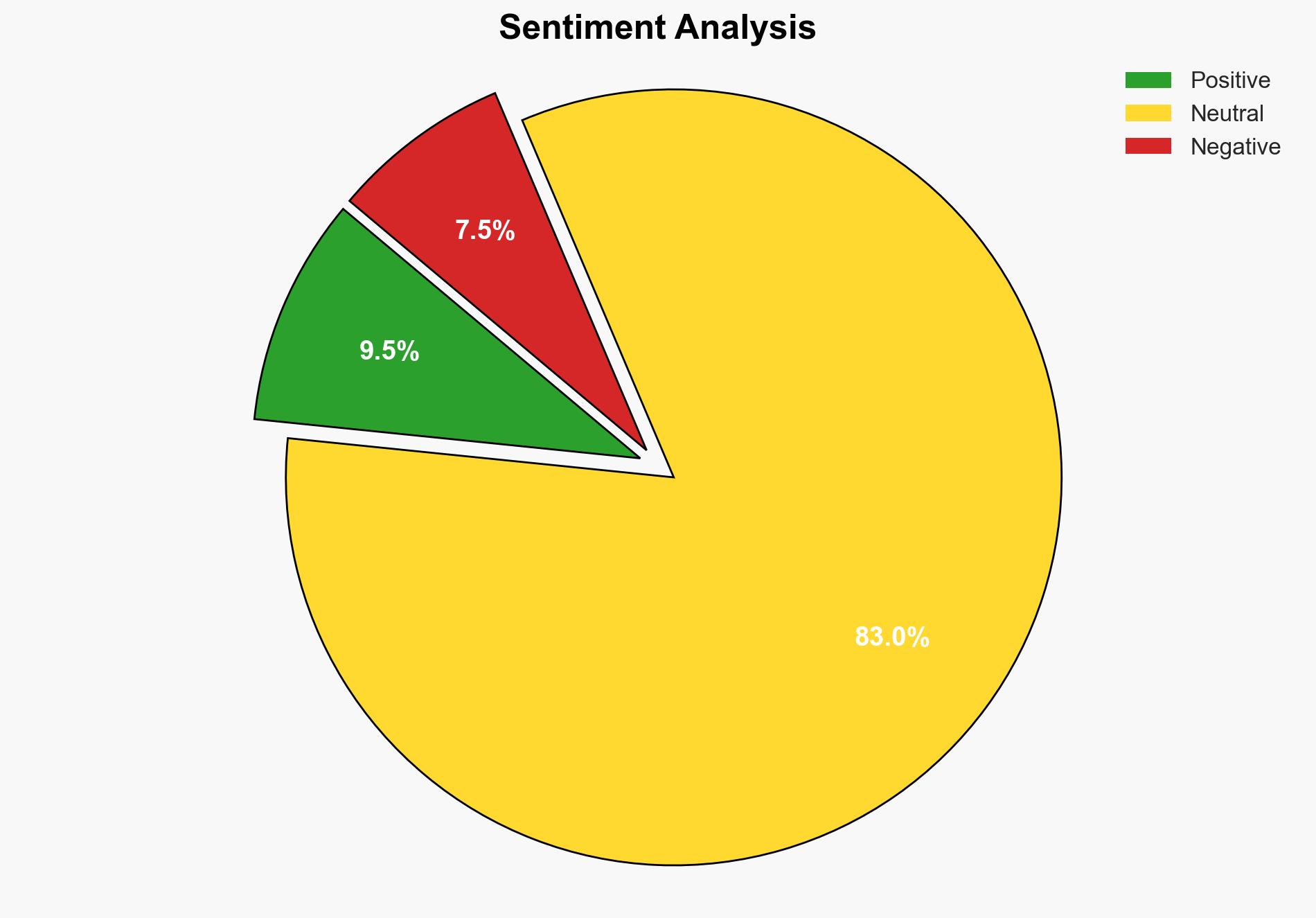Internet slowly recovers after far-reaching Cloudflare outage – Help Net Security
Published on: 2025-11-18
AI-powered OSINT brief from verified open sources. Automated NLP signal extraction with human verification. See our Methodology and Why WorldWideWatchers.
Intelligence Report: Cloudflare Outage Analysis
1. BLUF (Bottom Line Up Front)
The Cloudflare outage was likely caused by an internal error related to database system permissions rather than a cyber attack. Confidence level: Moderate. Recommended action: Enhance internal change management protocols and conduct a comprehensive review of system update processes to prevent recurrence.
2. Competing Hypotheses
Hypothesis 1: The outage was caused by an internal error due to a change in database system permissions, leading to a propagation of oversized feature files that overwhelmed the software.
Hypothesis 2: The outage was a result of a coordinated cyber attack exploiting vulnerabilities in Cloudflare’s network infrastructure.
Assessment: Hypothesis 1 is more likely given the detailed explanation provided by Cloudflare’s CEO, Matthew Prince, regarding the database system change. There is no substantial evidence or indicators of a cyber attack, such as claims of responsibility or unusual traffic patterns.
3. Key Assumptions and Red Flags
Assumptions: The explanation provided by Cloudflare is accurate and complete. The absence of external claims or evidence of a cyber attack is indicative of an internal issue.
Red Flags: Lack of detailed technical data on the incident could suggest information withholding. The timing and scale of the outage might be exploited by adversaries to sow distrust in Cloudflare’s reliability.
4. Implications and Strategic Risks
The outage highlights the vulnerability of internet infrastructure to internal errors, which can have widespread impacts on global internet accessibility. This incident may prompt increased scrutiny from regulators and clients, potentially affecting Cloudflare’s market position. There is also a risk of adversaries exploiting such incidents to conduct misinformation campaigns or cyber operations under the guise of similar outages.
5. Recommendations and Outlook
- Actionable Steps: Cloudflare should implement stricter change management controls and conduct regular audits of system updates. Establish a rapid response team to address future incidents swiftly.
- Best Scenario: Cloudflare strengthens its systems and regains client trust, leading to enhanced market position.
- Worst Scenario: Repeated incidents lead to loss of major clients and regulatory penalties.
- Most-likely Scenario: Cloudflare addresses the issue, but faces increased competition and scrutiny in the short term.
6. Key Individuals and Entities
Matthew Prince (Cloudflare CEO)
7. Thematic Tags
Cybersecurity, Internet Infrastructure, Risk Management
Structured Analytic Techniques Applied
- Adversarial Threat Simulation: Model and simulate actions of cyber adversaries to anticipate vulnerabilities and improve resilience.
- Indicators Development: Detect and monitor behavioral or technical anomalies across systems for early threat detection.
- Bayesian Scenario Modeling: Quantify uncertainty and predict cyberattack pathways using probabilistic inference.
- Network Influence Mapping: Map influence relationships to assess actor impact.
Explore more:
Cybersecurity Briefs ·
Daily Summary ·
Support us





